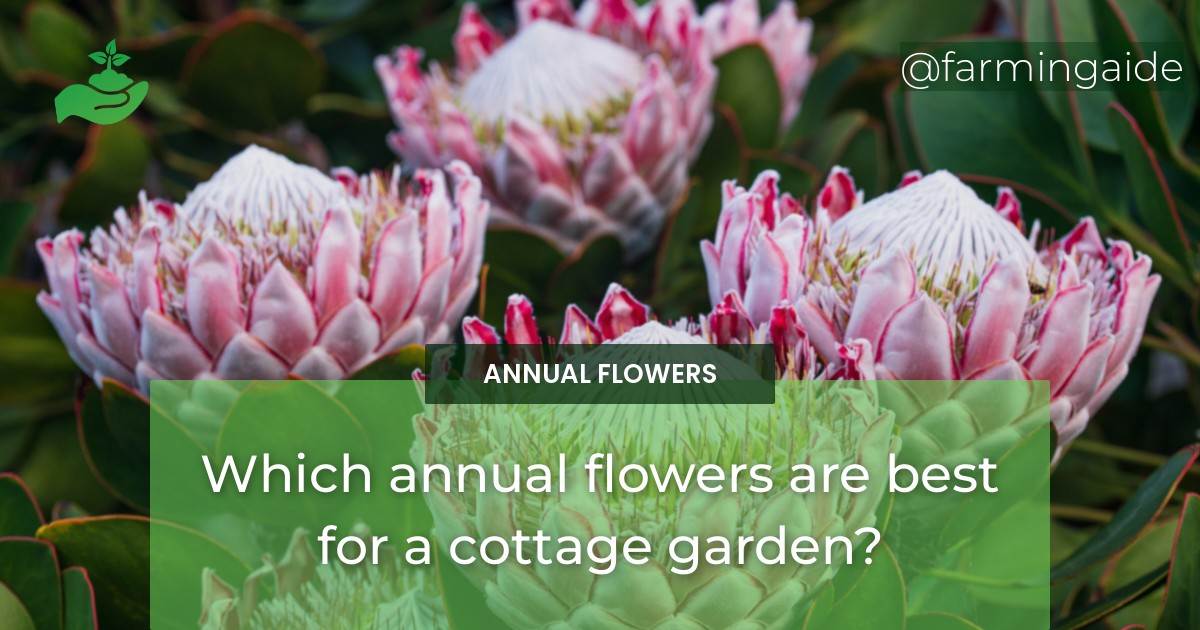A cottage garden is a charming and romantic addition to any home. Annual flowers are a perfect choice for a cottage garden as they provide a burst of color and can be replanted every year. In this article, we will discuss the best annual flowers for a cottage garden and factors to consider when choosing them. We’ll also provide tips for creating a cottage garden and how to maintain and care for your annual flowers.
Annual Flowers for a Cottage Garden: Creating a Nostalgic and Romantic Atmosphere
Best Annual Flowers for a Cottage Garden
Sweet Peas
Sweet peas are a classic cottage garden flower known for their sweet fragrance and delicate appearance. They prefer cool temperatures and can be planted early in the spring or fall.
Nasturtiums
Nasturtiums are an easy-to-grow, low-maintenance flower that comes in a range of bright colors. They can be grown in both sun and partial shade.
Cosmos
Cosmos are a versatile flower that comes in a range of colors and heights. They can be planted in both sun and partial shade and are a great option for cut flowers.
Sunflowers
Sunflowers are a tall, dramatic flower that adds a burst of color to any garden. They prefer full sun and can grow up to 6 feet tall.
Poppies
Poppies are a delicate flower that comes in a range of colors. They prefer full sun and can be planted in early spring or fall.
Zinnias
Zinnias are a low-maintenance, drought-tolerant flower that comes in a range of colors and sizes. They prefer full sun and can be planted in both spring and summer.
Marigolds
Marigolds are an easy-to-grow flower that comes in a range of colors. They prefer full sun and can be planted in both spring and summer.
Factors to Consider When Choosing Annual Flowers
Soil and Sunlight Requirements
Before choosing annual flowers for your cottage garden, it’s important to consider the soil and sunlight requirements of each plant. Some plants prefer full sun, while others prefer partial shade. It’s also important to choose plants that are well-suited to your soil type.
Color Palette
When choosing annual flowers for your cottage garden, consider the color palette you want to achieve. Cottage gardens often feature bright, cheerful colors, but you can also opt for a more muted, pastel palette.
Height and Spacing
Be sure to choose annual flowers that are well-suited to the height and spacing of your garden. Tall plants should be placed at the back of the border, while shorter plants can be placed at the front. Be sure to follow the recommended spacing for each plant to ensure proper growth.
Bloom Time
Consider the bloom time of each plant when choosing annual flowers for your cottage garden. You’ll want to choose plants that bloom at different times throughout the season to ensure a continuous display of color.
Tips for Creating a Cottage Garden
Start with a Plan
Before planting your cottage garden, it’s important to start with a plan. Consider the layout of your garden and how you want to incorporate different plants and features.
Incorporate Garden Structures
Cottage gardens often feature garden structures such as arbors, trellises, and fences. These structures can provide support for climbing plants and add visual interest to your garden.
Use Vintage or Repurposed Items
Cottage gardens often feature vintage or repurposed items such as old watering cans, birdhouses, and garden tools. These items can add charm and character to your garden.
Embrace the Wabi-Sabi Aesthetic
The wabi-sabi aesthetic is all about embracing imperfection and finding beauty in the natural world. Embrace this aesthetic in your cottage garden by allowing plants to grow naturally and incorporating natural materials such as stone and wood.
Maintenance and Care of Cottage Garden Annuals
Watering and Fertilizing
Annual flowers in a cottage garden require regular watering and fertilizing to ensure healthy growth. Be sure to follow the recommended watering and fertilizing schedule for each plant.
Deadheading and Pruning
Deadheading and pruning are important tasks for maintaining the health and appearance of your cottage garden annuals. Deadheading involves removing spent flowers, while pruning involves cutting back the plant to promote new growth.
Pest and Disease Management
Annual flowers in a cottage garden are susceptible to a range of pests and diseases. Be sure to monitor your plants regularly and take action if you notice any signs of pest or disease infestation.
Conclusion
Creating a cottage garden with annual flowers is a great way to add charm and a romantic atmosphere to your home. By choosing the right annual flowers, considering factors such as soil and sunlight requirements and color palette, and following tips for creating and maintaining your garden, you can create a beautiful and thriving cottage garden that will provide joy and beauty for years to come.
RELATED ARTICLES:


